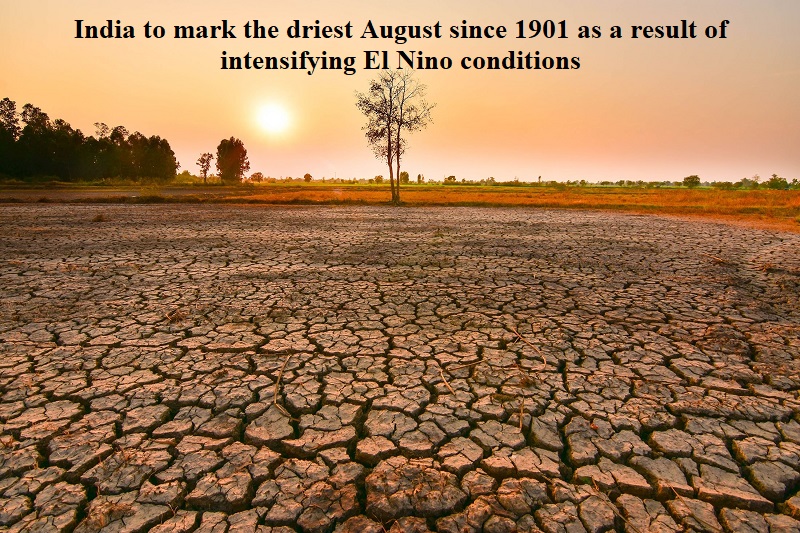
India is on the verge of experiencing its driest August since 1901, with meteorologists attributing this phenomenon to the intensifying El Nino conditions. The nation’s monsoon season of this year is also expected to conclude as the driest since 2015, as authorities reported a rainfall deficit of 13 percent.
A representative from the India Meteorological Department (IMD) affirmed that August’s precipitation deficiency of 32 percent, coupled with predictions of minimal rainfall in the coming three days across the country, is poised to lead to the driest August on record since 1901.
In the month of August, the recorded rainfall amounted to 254.9 mm, equivalent to 30 percent of the total monsoon season’s precipitation. The historical IMD data reveals that in August 2005, there was a rainfall deficit of 25 percent; similar deficits were seen in 1965 (24.6 percent), 1920 (24.4 percent), 2009 (24.1 percent), and 1913 (24 percent).
The Chief of IMD, Mrutyunjay Mohapatra, elucidated that the primary factor contributing to the below-average August rainfall is the El Nino effect, combined with the unfavorable phase of the Madden Julian Oscillation (MJO). The MJO is known for suppressing convection in the Bay of Bengal and the Arabian Sea.
El Nino, characterized by the warming of Pacific Ocean waters near South America, typically results in dry weather and weakened monsoon winds in India.
While the favorable phase of the MJO led to above-normal rainfall in July, Mohapatra noted that prevailing El Nino conditions affected only two out of the five low-pressure systems that emerged over the Bay of Bengal. Another factor influencing August’s below-average rainfall was the reduced number of low-pressure systems in the South China Sea, which moved northward.
Madhavan Rajeevan, former secretary at the Ministry of Earth Sciences, attributed the relatively optimistic outlook for September to the positive Indian Ocean Dipole (IOD). Rajeevan explained that September’s rainfall is projected to be below the normal range due to El Nino conditions, though not as severe as August’s.
He further identified the absence of the positive MJO phase as a potential contributing factor. Mohapatra anticipates September’s rainfall to hover between 94 and 99 percent of the normal range of 422.8 mm.

Post Your Comments